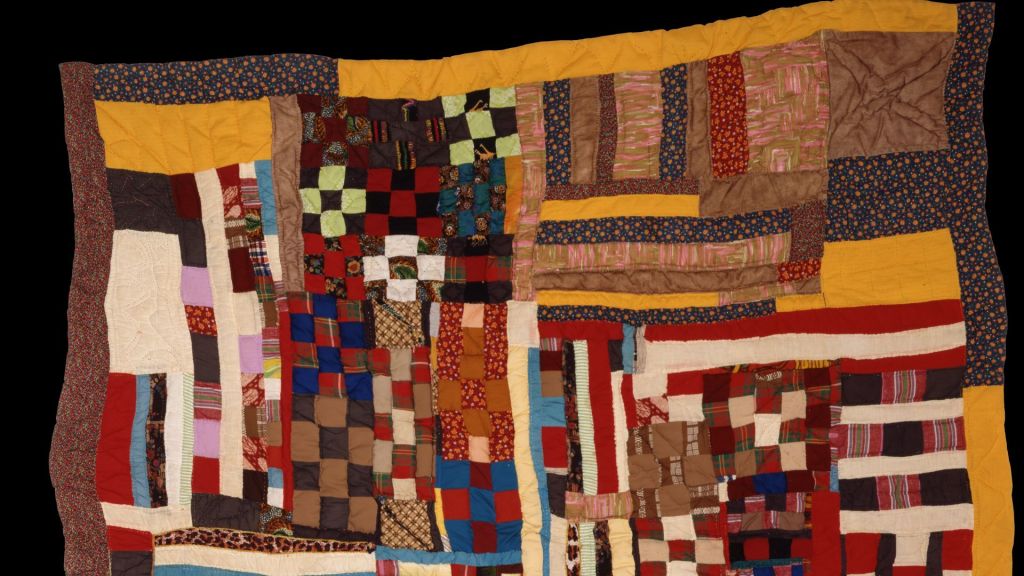By Aria Brent
AFRO Staff Writer
abrent@afro.com
The legacy of groundbreaking artist Elizabeth Talford Scott is gaining attention around the City of Baltimore with a series of exhibits displayed at nine different sites at different points throughout the year. “No Stone Left Unturned: The Elizabeth Talford Scott Initiative,” pulled together five museums and four university sites across the city in a unified tribute and celebration of Scott’s work. Each venue has worked with students in the Exhibition Development Seminar (EDS) at Maryland Institute College of Art (MICA) to organize a free public program and create a presentation of Scott’s work for their gallery spaces.
Although the EDS course is taught at MICA, students from several schools including Johns Hopkins, Morgan and Coppin State Universities are enrolled in the course and have been involved in the curation and development of the exhibits. EDS instructor Deyane Moses, who also serves as Afro Charities’ curator of Archives, spoke on the origins of the program and what it’s bringing to the Baltimore area.
“The city of Baltimore is getting the chance to learn more about Black women artists and to be re-introduced to Elizabeth Talford Scott, the mother of Joyce J. Scott, who is a well known artist in Baltimore. She was a fiber artist and the way in which she thought and worked is different than anything I’ve ever seen before,” Moses explained. “She included rocks and stones and other types of archival material like beads and different fabrics that she inherited from other people and her own personal travels and experiences.”
One of the museums participating in the initiative is the Reginald F. Lewis Museum. Their exhibit, “BLACK WOMAN GENIUS: Elizabeth Talford Scott—Tapestries of Generations,” has been on display since February of this year and it features art from Scott and several other artists including her daughter, Joyce J.Scott. The multi-generational exhibit is broken up into four different themes, all of which pay homage to the impact the legendary artist made on the world of art.
“The show is separated into four themes and the four themes are ancestry tradition, healing and fiber narratives. in our fiber narratives theme, we have pieces from Murjani Merriweather, and her work is focusing on pushing back against Eurocentric beauty standards that Black people and more specifically in this show Black women have faced,” explained Imani Haynes, the curator at the Reginald F. Lewis Museum.
“We also have work from Glenda Richardson. We‘re featuring one of her quilts ‘Black Lives Still Matter’ and it is a quilt where it’s remembering the lives of those who were murdered at the hands of police and in the center of that quilt, she has a Black woman with the Black Power fist raised and an African proverb quote, that says ‘They tried to bury us but didn’t know we were seeds.’”
The Lewis Museum has one of Scott’s earliest pieces on display along with some of her other quilts. As the Lewis Museum honors her legacy they’ve also dedicated part of the exhibit to her trailblazing influence in the world of textile art and in regards to Black women in art overall. Other artists such as Merriweather and Richardson are being featured in the exhibit as well to help emphasize the creativity and beauty that exist within Black textile art.
“When developing the show, we were thinking of her genius as a Black woman and fiber artist. “BLACK WOMAN GENIUS” is an exhibit where we are celebrating the life and legacy of Elizabeth Talford Scott, but we also wanted to position her as the mother figure to Black women and the fiber arts,” stated Haynes. “With Elizabeth being as groundbreaking as she was as a quilter, we wanted to make sure that the work of our featured Black women artists were doing the same.”
In addition to the Lewis Museum, the Walters Art Museum displayed some of Talford Scott’s work and highlighted her unique craftsmanship that has since inspired generations of artists. “Stitched Memories: Celebrating Elizabeth Talford Scott” highlights Talford Scott’s creativity explored the artist’s ability to fuse cultures and history. The Walters featured two of the three small sculptures that were created by Talford Scott and are simply titled “Chinese Pillow.” How these pillows added to the already extensive Chinese textile collection at the Walters was explained to the AFRO by Dany Chan, associate curator of Asian art at the Walters Art Museum.
“The student curators came on board and they found out that Elizabeth had actually used a Chinese robe to make a total of three pillows and we were able to secure a second pillow.Two out of the three pillows are now on display in the exhibit,” said Chan. “‘Stitched Memories’ unique students were able to connect Elizabeth’s work to our historical Chinese Textile Collection. On view, we have a 19th century Chinese woman’s ceremonial cloud collar, and that cloud collar shape is invoked in the pillows.”
“Elements of the cloud collars fabric and motifs were also used in the pillows themselves. We able to make connections for our visitors to demonstrate this great melding of time periods, of cultures but also of shared motifs,” Chan continued.
The exhibit at the Walters Art Museum closed on May 12, but there is plenty of work to still be enjoyed. The work of Talford Scott is timeless and it continues to inspire and remain relevant to artists everywhere. The textile art pioneer is often overlooked and undermined, however projects like EDS and artists like Moses are helping keep her legacy well and alive.
“Elizabeth Talford Scott, when you look at her work, it really shows you what creativity is. I feel like her work is something only she could come up with,” Moses exclaimed. “We would not have the amazing artist we have now if it had not been for her.”
Information on the open and ongoing exhibits can be found below:
Kaleidoscope: Changing Perspectives
February 1 – May 19, 2024
The Peale
225 Holliday Street | thepeale.org
BLACK WOMAN GENIUS: Elizabeth Talford Scott—Tapestries of Generations
Feb. 1 – Sept. 30, 2024
Reginald F. Lewis Museum of Maryland African American History and Culture (RFLM)
830 East Pratt Street | lewismuseum.org
Material and Memories: Elizabeth Talford Scott and the Crazy Quilt Tradition
Feb. 1 – Dec. 1, 2024
Maryland Center for History and Culture (MCHC)
610 Park Avenue | mdhistory.org
The post Elizabeth Talford Scott honored at multiple art exhibits throughout Baltimore appeared first on AFRO American Newspapers.










